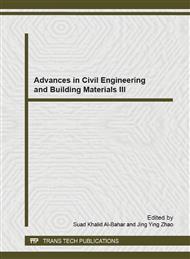p.3
p.9
p.14
p.18
p.23
p.27
p.32
p.36
Lime-Crusted Rammed Earth: Materials Study
Abstract:
This study analyses the durability of rammed-earth wall construction techniques. The analysis focuses on three medieval masonry types from the Castle of Villavieja (Castellón, Spain) using two variations of lime-reinforced rammed earth in its walls: lime-crusted rammed earth and brick-reinforced rammed earth. Materials analysis reveals the good properties of the materials used in the outer wall facing despite its age. It also clearly shows how deterioration depends more on the construction technique (construction of the wall with a base, cornice, facings, core; on-site installation, bonds, etc.) than on the material itself. These two types of lime-reinforced rammed earth (lime-crusted rammed earth and brick-reinforced rammed earth) are the most common kinds of fortified architecture in the Iberian Peninsula as well as in northern Africa and the Middle East. The case presented herein is therefore highly relevant as it advances our knowledge of the behaviour of the materials comprising these walls and lays the foundations for suitable future conservation works of a vast array of architectural heritage.
Info:
Periodical:
Pages:
9-13
Citation:
Online since:
December 2013
Price:
Сopyright:
© 2014 Trans Tech Publications Ltd. All Rights Reserved
Share:
Citation:


